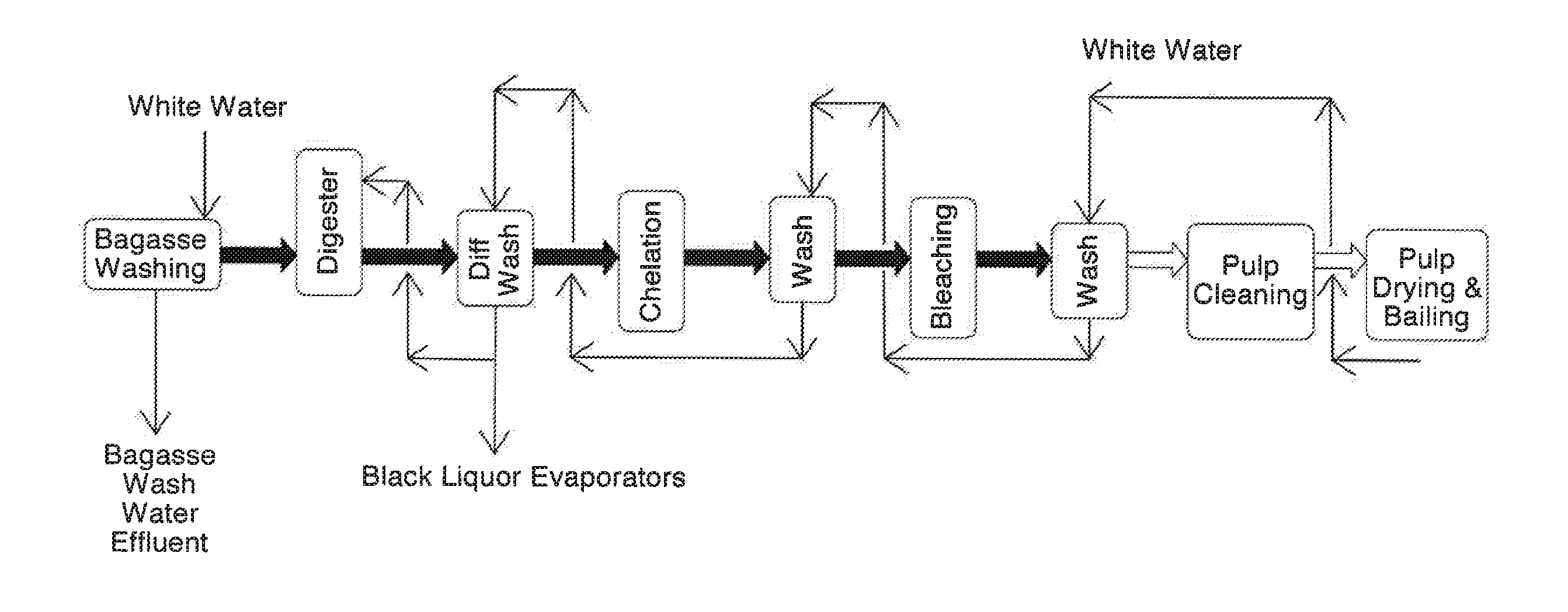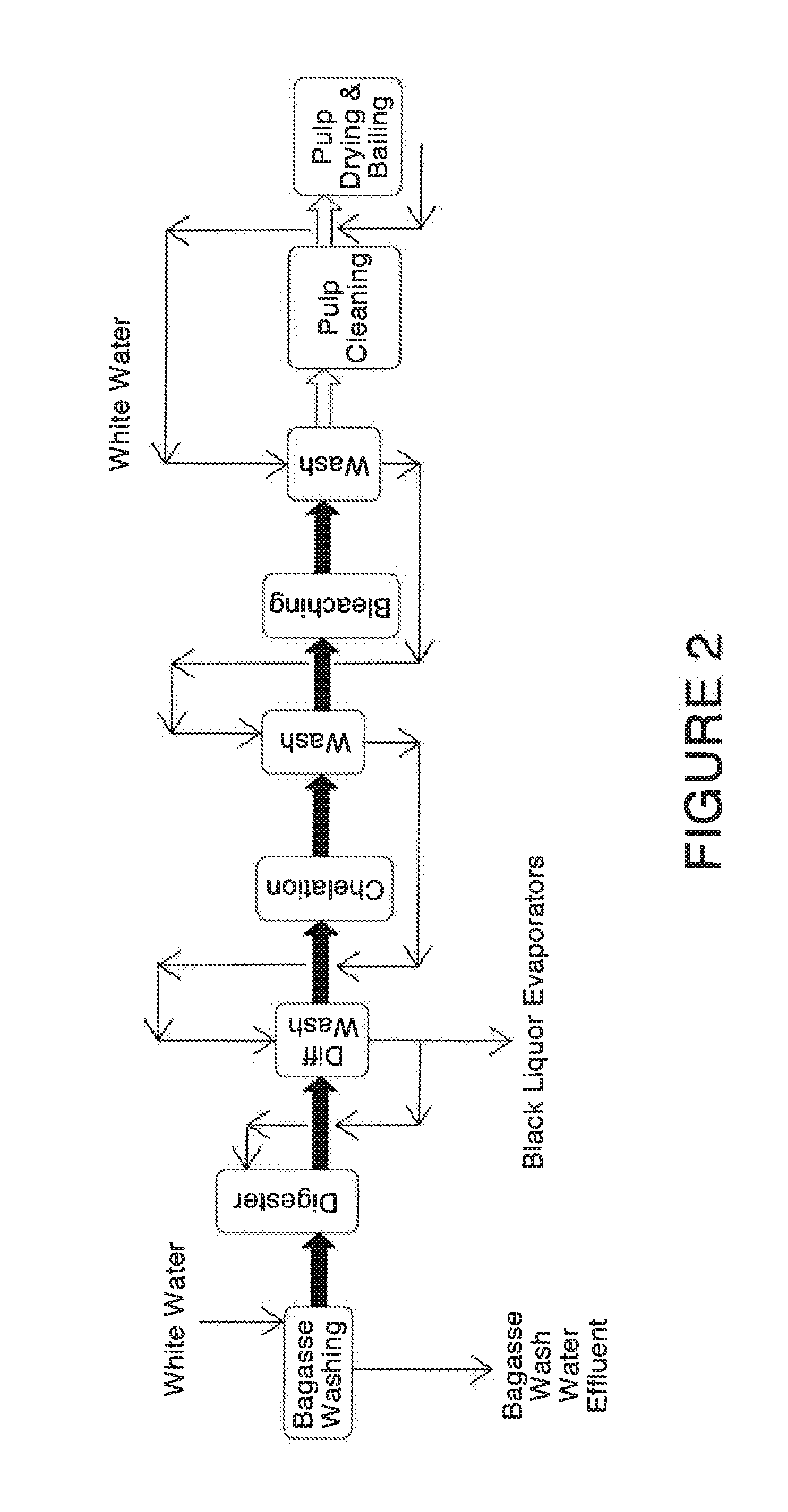Pulping processes
a technology which is applied in the field of pulp composition and pulping process, can solve the problems of low pulp strength, insufficient reduction of kappa in existing pulping process, and inability to provide wood pulps having a sufficient reduction in kappa
- Summary
- Abstract
- Description
- Claims
- Application Information
AI Technical Summary
Benefits of technology
Problems solved by technology
Method used
Image
Examples
example 1
Cleaning of Raw Fibers
[0074]Bagasse was used as an example of raw fibers. Bagasse was first hydrated for 10 minutes with hot clean water (temperature of water was above room temperature, about 40° C., or 60° C.), under moderate agitation, at a consistency of 0.5% to 2.0%. Pith and sand were separated from the fibers in a Trammel Screen, which was a rotating drum that lifted and dropped the material and accepted water and pith through ⅛th inch holes up to ½″ holes. The rejected material was collected and removed from the screen to prevent accumulation, and disposed, and was dried before added into the pulping process. The washing yield was about 80% or higher, or about 85.9%, depending on quality of the bagasse starting material.
example 2
Soda AQ Pulping of Bagasse
[0075]OD bagasse (cleaned as described in Example 1, Kappa number was 89) was treated with sodium hydroxide (20% by weight of the OD bagasse) and AQ (0.3% by weight to the dry weight of OD bagasse) at a liquid to dry fiber ratio of 7 (consistency of about 12.5%), at maximum temperature of about 175° C. for 35 or 40 minutes. Time to the maximum temperature was 60 minutes.
[0076]The target H-factor was 0.1060, as low as 20, and as high as 3000, and the temperature of the pulping reaction was 120° C. to 185° C. The Kappa number of the obtained pulp was 4.5.
example 3
Washing of Pulp
[0077]A pulp obtained from Example 2 was washed in a pressure diffuser washer designed specifically to accomplish all washing with a single unit without introducing undesired modifications to the pulp. The temperature of the wash water was chosen to cool the pulp temperature to about 100° C., 95° C., 90° C., 85° C., 80° C. or lower. The output went to a bleaching step and was cooled to 100° C. or less to prevent flashing.
PUM
| Property | Measurement | Unit |
|---|---|---|
| Kappa number | aaaaa | aaaaa |
| Kappa number | aaaaa | aaaaa |
| Kappa number | aaaaa | aaaaa |
Abstract
Description
Claims
Application Information
 Login to View More
Login to View More - R&D
- Intellectual Property
- Life Sciences
- Materials
- Tech Scout
- Unparalleled Data Quality
- Higher Quality Content
- 60% Fewer Hallucinations
Browse by: Latest US Patents, China's latest patents, Technical Efficacy Thesaurus, Application Domain, Technology Topic, Popular Technical Reports.
© 2025 PatSnap. All rights reserved.Legal|Privacy policy|Modern Slavery Act Transparency Statement|Sitemap|About US| Contact US: help@patsnap.com



